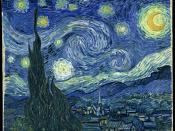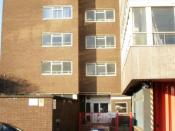The phenomenon of Bipolar Affective Disorder has been a mystery since the 16th
and 17th century. The Dutch painter Vincent Van Gogh was thought to of suffered from
bipolar disorder. It appears that there are an abundance of people with the disorder yet,
no true causes or cures for the disorder. Clearly the Bipolar disorder severely undermines
their ability to obtain and sustain social and occupational success. However, the journey
for the causes and cures for the Bipolar disorder must continue.
Affective disorders are primarily characterized by depressed mood, elevated
mood or (mania), or alternations of depressed and elevated moods. The classical term is
manic-depressive illness, a newer term is Bipolar disorder. The two are interchangeable.
Milder forms of a depressive syndrome are called dysthymic disorder, mild forms of
mania are hypomania and the milder expressions of Bipolar disorder are called
cyclothymic disorders. The use of the term primary affective disorder refers to the
individuals who had no previous psychiatric disorders or else only episodes of mania or
depression. Secondary affective disorder refers to patients with preexisting psychiatric
illness other than depression or mania (Goodwin, Guze. 1989, p.7 ).
Bipolar affective disorder affects approximately one percent or three million
persons in the United States, afflicting both males and females. Bipolar disorder involves
episodes of mania and depression. The manic episodes are characterized by elevated or
irritable mood, increased energy, decreased need for sleep, poor judgment and insight,
and often reckless or irresponsible behavior (Hollandsworth, Jr. 1990 ). These episodes
may alternate with profound depressions characterized by a pervasive sadness, almost
inability to move, hopelessness, and disturbances in appetite, sleep, in concentrations and
driving.
Bipolar disorder is diagnosed if an episode of mania occurs whether depression
has been diagnosed or not (Goodwin, Guze, 1989, p 11). Most commonly, individuals
with manic...



Paper found on another site
http://www.papercamp.com/hlth9.shtml
1 out of 3 people found this comment useful.